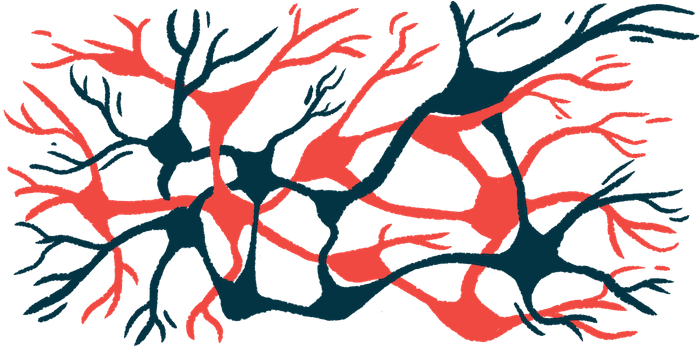In amyotrophic lateral sclerosis (ALS), nerve cells in the spinal cord responsible for inhibiting motor neurons are lost in the early stages of the disease, before the motor neurons themselves, according to a new study done in a genetic mouse model of ALS.
The researchers also found that excitatory motor neurons are lost in later disease stages and are linked to a faster progression of neurodegeneration.
Understanding the molecular players involved in this progression of events may provide valuable information for the development of novel therapeutic approaches, the team said, with the study noting that at least one aspect of this work “could be targeted as a potential ALS treatment.”
The study, “Spinal inhibitory neurons degenerate before motor neurons and excitatory neurons in a mouse model of ALS,” was published in Science Advances.
Investigating spinal cord nerves for clues for treating ALS
ALS is characterized by the death and degeneration of motor neurons, which are the nerve cells responsible for controlling muscle movements. However, the disease doesn’t just affect motor neurons — it also affects interneurons, or nerve cells that carry signals between other nerve cells, helping to coordinate nerve signaling. Interneurons can be excitatory if they signal for other nerves to activate, or inhibitory if they prevent other cells from firing.
“In healthy individuals, these cell circuits are required to perform movements [such] as walking and running,” Ole Kiehn, MD, co-author of the study and a professor at the University of Copenhagen, in Denmark, said in a press release.
“There are specific cells, called inhibitory or excitatory interneurons, which control different aspects of movement by activating motor neurons,” Kiehn added.
Using a mouse model of ALS caused by the SOD1 gene, the team of scientists combined detailed molecular tests with analyses based on artificial intelligence (AI) to get a better understanding of how each of these types of nerves is affected over the course of the disease’s progression.
“By using techniques that allow [us] to simultaneously study multiple cell types in spinal cord tissue, combined with a novel AI-based analysis method, we identified the specific networks of cells affected early in [the] disease before motor neurons die,” said Ilary Allodi, co-author of the study and a lecturer at the University of St. Andrews, in the U.K.
“We used techniques that allow us to [visualize] and quantify multiple genes at the same time with single cell resolution in the spinal cord of the ALS mouse model,” Allodi added.
The results showed that inhibitory interneurons became abnormal before any other type of nerve cell, though they were lost quite slowly over time. By comparison, excitatory interneurons usually did not show signs of sickness until later on, but once they started to sicken, they degenerated much more quickly.
According to Kiehn, the team “found that some of these cells are affected at different stages of ALS, with the inhibitory interneurons being affected early on and the excitatory ones being affected later during disease progression.”
By using techniques that allow [us] to simultaneously study multiple cell types in spinal cord tissue, combined with a novel AI-based analysis method, we identified the specific networks of cells affected early in [the] disease before motor neurons die. … We used techniques that allow us to [visualize] and quantify multiple genes at the same time with single cell resolution in the spinal cord of the ALS mouse model.
An important takeaway from these data, the researchers said, is that inhibitory interneurons tend to sicken even before the motor neurons, whose defect causes disease symptoms. Based on the findings, the researchers speculated that the early degeneration of inhibitory interneurons might disrupt the normal balance of nerve activity, ultimately setting the stage for the disease to progress in earnest.
“These findings clearly demonstrate that inhibitory interneuron dysregulation precedes motor neuron death and thereby changes the balance of the inhibitory/excitatory synaptic input onto motor neurons,” the researchers wrote.
If that’s true, then it might be possible to treat ALS by restoring the balance of inhibitory and excitatory nerve signaling, the researchers said.
The team called for further investigations to pursue this idea, noting also that additional studies will be needed to zero in on exactly which subpopulations of inhibitory interneurons are most susceptible to ALS, and to figure out why these cells in particular seem to be vulnerable to the disease.

